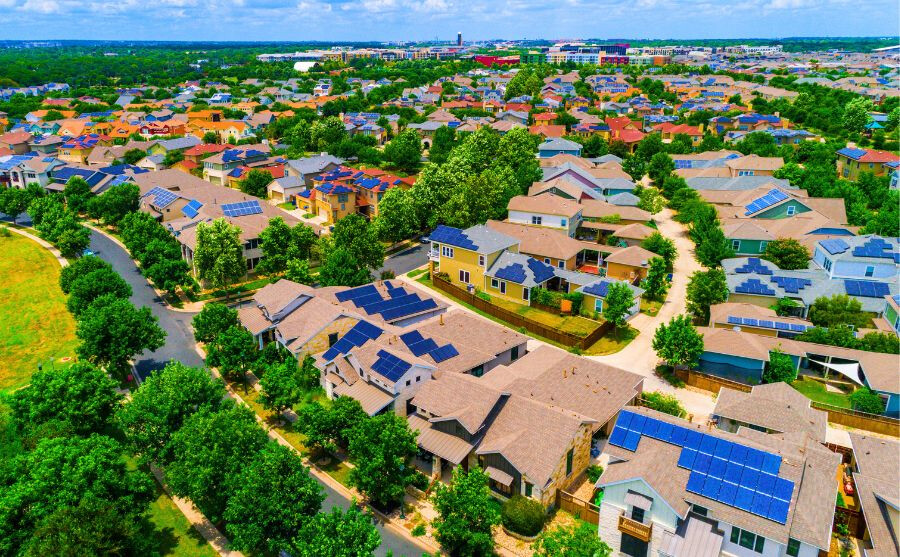

9/29/2025



The urgency for new measures to preserve the Earth by recycling the resources we already use and producing new energy in a clean and sustainable manner is great. And it is with this in mind that one of the greatest social and energy revolutions of the century has taken hold around the world, growing day by day and becoming the key to sustainable energy production: energy communities.
Energy communities represent a new model of energy production, distribution and consumption that promotes the active participation of citizens and businesses in the energy transition process. They are collective initiatives in which groups of people, companies or public bodies come together to produce renewable energy locally and share it among community members. This model not only reduces dependence on fossil energy sources, but also promotes a fairer distribution of the economic and environmental benefits of renewable energy use.
Introduced in Europe by the RED II Directive 2018/2001/EU, energy communities consist of the aggregation of entities, such as households, small and medium-sized enterprises or local authorities, that organise themselves to produce and consume renewable energy. The main objective is to promote decarbonisation and increase energy sustainability, through the generation of energy from sources such as photovoltaic, wind, hydroelectric or biomass.
How is an energy community created? The first step is to set up a legal entity among the future members of the community, whether they are individuals, small or medium-sized enterprises, local authorities or public administrations. By law, an energy community cannot have profit as its purpose and, for this reason, the most common form chosen as legal expression is the Association.
The next step after setting up the association is to identify the area in which to install the generation plant, which must be in a location close to those who will actually consume the energy generated. The functioning of energy communities, in fact, is based on locally installed renewable energy generation plants and, therefore, this implies, for example, that a company or a state body may install a photovoltaic plant near a school or a manufacturing plant and share the energy with the citizens of the municipality who have joined the initiative. It should be added, however, that the plant does not have to be owned by the community: it can be made available by one or more of the participating members or even by a third party.
The energy produced is then distributed among the members of the community itself, who benefit in terms of reduced energy costs and reduced greenhouse gas emissions: each member of the group, in fact, normally continues to pay the utility bill to their supplier, but at the same time receives a periodic sum from the energy community for sharing in the benefits of the community. This translates, in effect, into a drastic reduction in utility costs. In addition, surplus energy that is not consumed can be sold to the national grid, generating additional revenue.
There are different types of energy communities, depending on their purpose and mode of operation:
The energy community model offers numerous benefits, both environmentally, economically and socially, such as
Despite the many obvious benefits that energy communities are able to bring to the community, they also face some challenges that are not always easy to manage. The European RED II Directive is rather recent (2018) and, consequently, national regulations are not yet fully adapted to the realities they address, often creating legal and bureaucratic hurdles.
Another rather relevant aspect to consider is also that of initial costs. Setting up energy production plants requires significant initial investments, which can be an insurmountable barrier for small communities that lack sufficient funding and space to start the project.
Finally, the technical knowledge to run an energy community cannot but be prioritised. Starting an energy community requires specific technical skills for the design and maintenance of installations, as well as for the management of the grid and electricity distribution.
Energy communities are a concrete response to the challenges of energy transition and climate change. By promoting a distributed and participatory energy model, they can accelerate the transition to a more sustainable, decentralised and democratic energy system. Moreover, they can contribute significantly to achieving the European targets set for 2030 and 2050 to reduce emissions and increase the use of renewable energy.
Energy communities are a key building block for the future of sustainable energy. By self-producing and sharing renewable energy, they offer an inclusive and innovative model for managing energy resources. They not only reduce polluting emissions, but also strengthen the social and local fabric, promoting the idea that the energy transition can be driven directly by the communities themselves.

Want to know more?
We’d be happy to talk more in detail about your needs and explore how we can become your ideal partner, to assist you in your business venture of innovation, digitization and sustainability